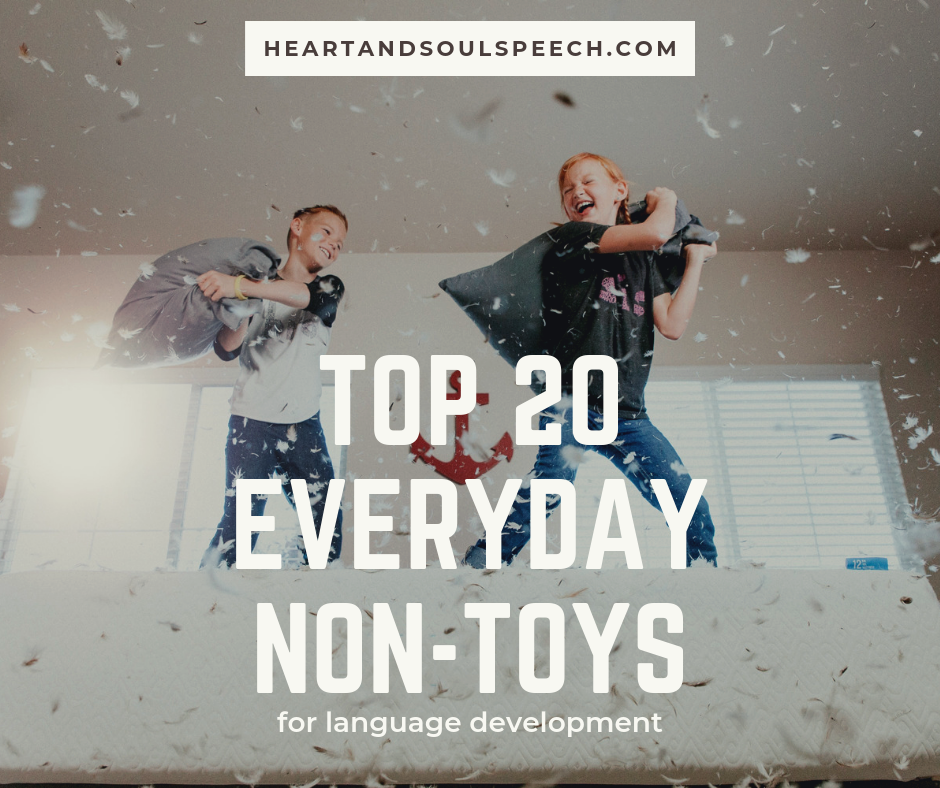
Why is it that I’m always more excited by a new toy than my toddler? He’s perfectly happy with the diaper wipe box, kitchen utensils, and my scarf. Actually, most of his favorite play things aren’t toys at all. The everyday items he finds around the house and yard are where his creativity, curiosity, and his best learning happens. To top it all, it’s FREE! The definition of “toy” is “an object to play with.” That can literally be anything.
I’ve already shared my Top 20 Toys for Language Development, but here’s my Top 20 list of everyday “non-toys” that can promote speech and language development for all ages!
Please use caution as some items listed may be choking hazards or unsafe for very young children without appropriate supervision. The following is in no particular order.
1. Plastic cups 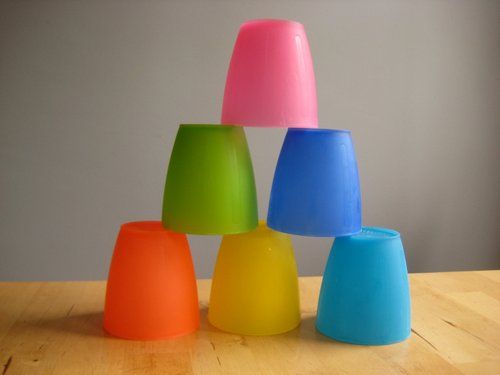
Stacked in a tower or pyramid, plastic cups can be fun target practice or used to pour objects. Using it as a microphone to talk into is fun to hear your echo!
2. Boxes and containers
Think shoe boxes, Tupperware, egg cartons, suitcases, tissue boxes, milk jug, water bottles, wipe boxes. Whether you’re matching lids or filling up and dumping, the possibilities are endless. Prepositions such as “in/out, on/off, on top/under” are great to target here!
3. Paper towel rolls
These are just so easy for pretend play! Binoculars, a megaphone, ramps and tunnels for balls and cars, swords, a bat. You could make a rain stick (beans inside with ends taped shut) for listening and turn-taking practice.
4. Furniture, pillows, and blankets
Motor skills build language too! Use what you have to make an obstacle course, stepping stones, bean bag toss, or build a fort. Have an indoor picnic or play hide-and-seek. Verbs like “jump, run, throw, build, eat, etc.” can be modeled.
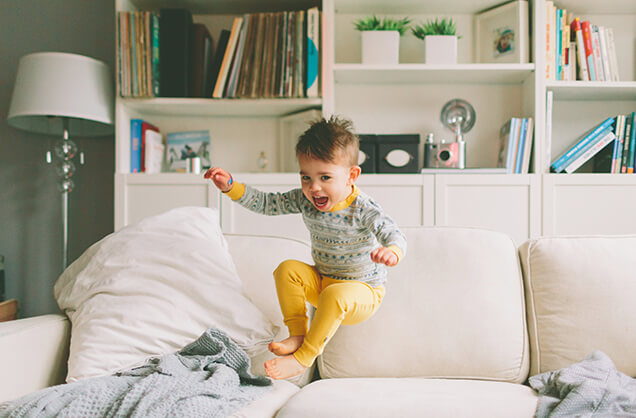
5. Rubber Bands & Paper clips
Whether you’re making a craft, stretching over objects, or putting on door knobs or a magnet, these can be interesting for creative play and fine motor skills.
6. Scarves & Fabrics
I remember the first time my toddler explored what happened when he threw a scarf in the air—so much fun to learn cause and effect! You can play peek-a-boo for turn-taking. Talking about textures, shapes, and colors of different fabrics practices those describing adjectives.
7. Laundry baskets
This may be an extension of #2, but children can take a ride in the laundry basket, or put their stuffed animal in to push or pull around. It’s hours of fun just waiting to be had.
8. Cotton balls
These are fun to blow with straws, dip in paint or water, or fill a box full to hide treasures!
9. Pots & Pans
Besides banging around to make music, pots and pans are good for pretend kitchen play. You can also have fun filling muffin pans and sorting objects by color or shape And don’t forget the colander! Water play or practicing fine motor skills by putting pipe cleaners in each hole can be great for language too.
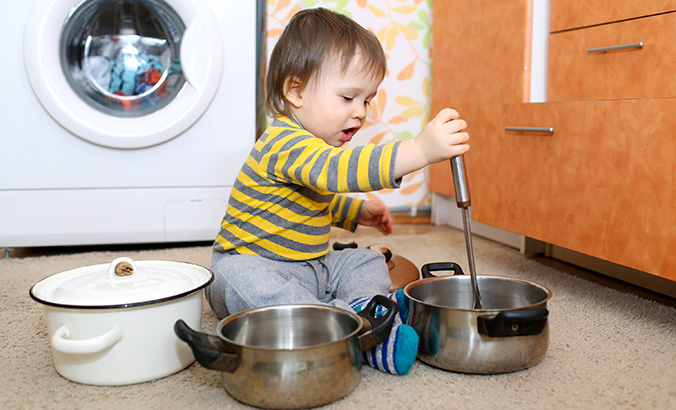
10. Kitchen utensils
Measuring cups, wooden spoons, whisk, tongs, cookie cutters, chopsticks, butter knives – whatever you have, it’s bound to be interesting!
11. Sensory bins
There are so many ways to make a sensory bin. Some of my favorites are: sand, soap, water, bubbles, shaving cream, packing peanuts, shredded paper, dried beans or noodles, coffee beans, and paint. Describing words and verbs are easy in this play.
12. Junk mail
Take a dive in the recycling bin to find that junk mail treasure. Pretend to mail letters, make a collage, play I Spy, or just tear them up. Kids of all ages can find a way to make junk mail fun!
13. Nature finds
Another one of my favorite ways to play! Get outside and go on a scavenger hunt. Find and talk about the sticks, stones, leaves, bugs, grass—anything you find! Gardening tools and the watering can are also fun to explore.
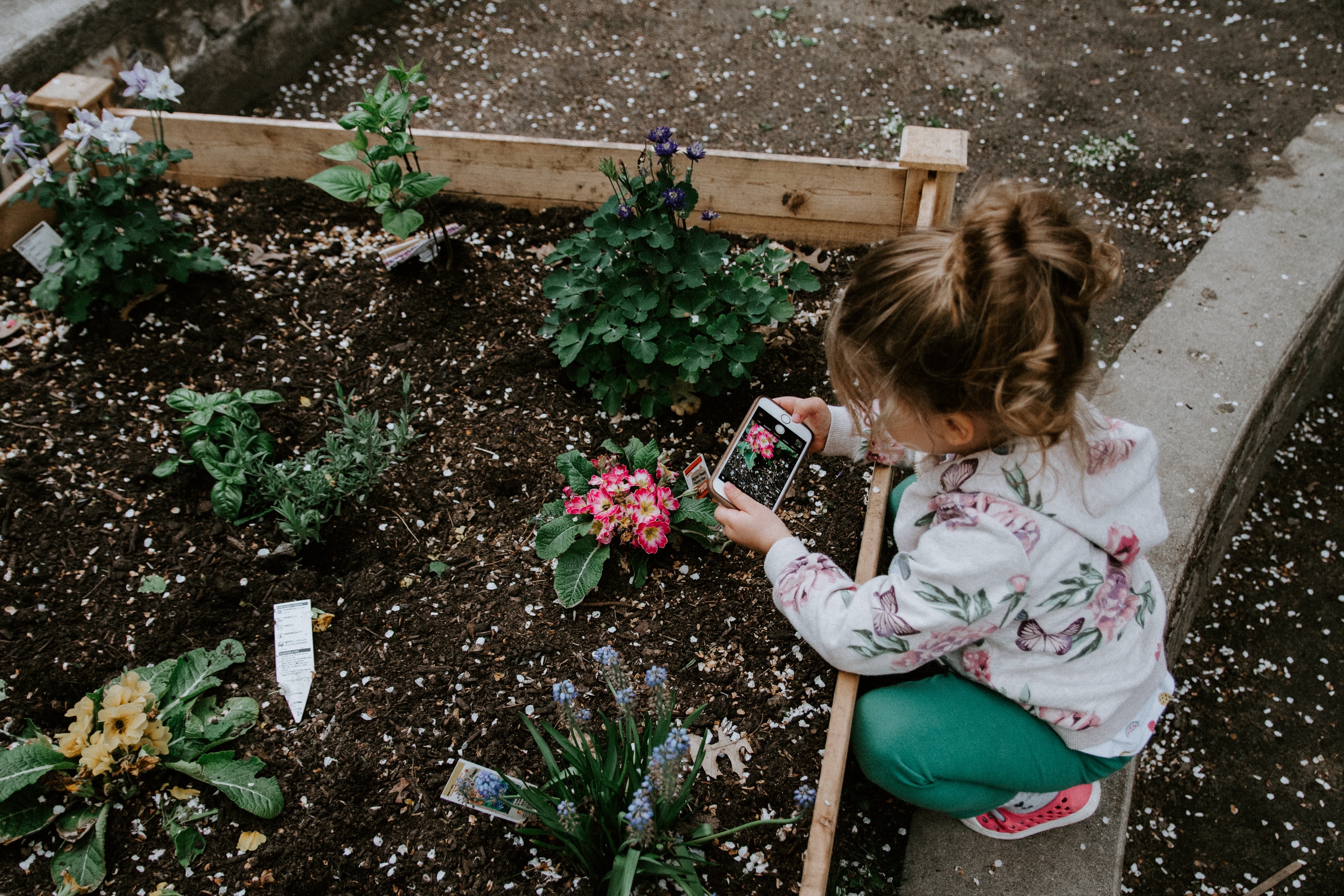
14. Radio
Music can be a fun way to increase language through song and dance. Turn on your favorite tunes for a dance party, play musical chairs or red light/green light, or listen for rhyming words.
15. Mirror
Babies love mirrors as it opens up their world to new perceptive and feedback. When they move, of course, the reflection moves. It’s the ultimate cause and effect toy! Mirrors help children of all ages learn about their bodies, facial expressions/nonverbal communication, and even labeling emotions.
16. Tissue paper, bows, stickers, popsicle sticks
Children can make almost any craft supply turn into something amazing. Set out some supplies and let them go to work on their masterpiece!
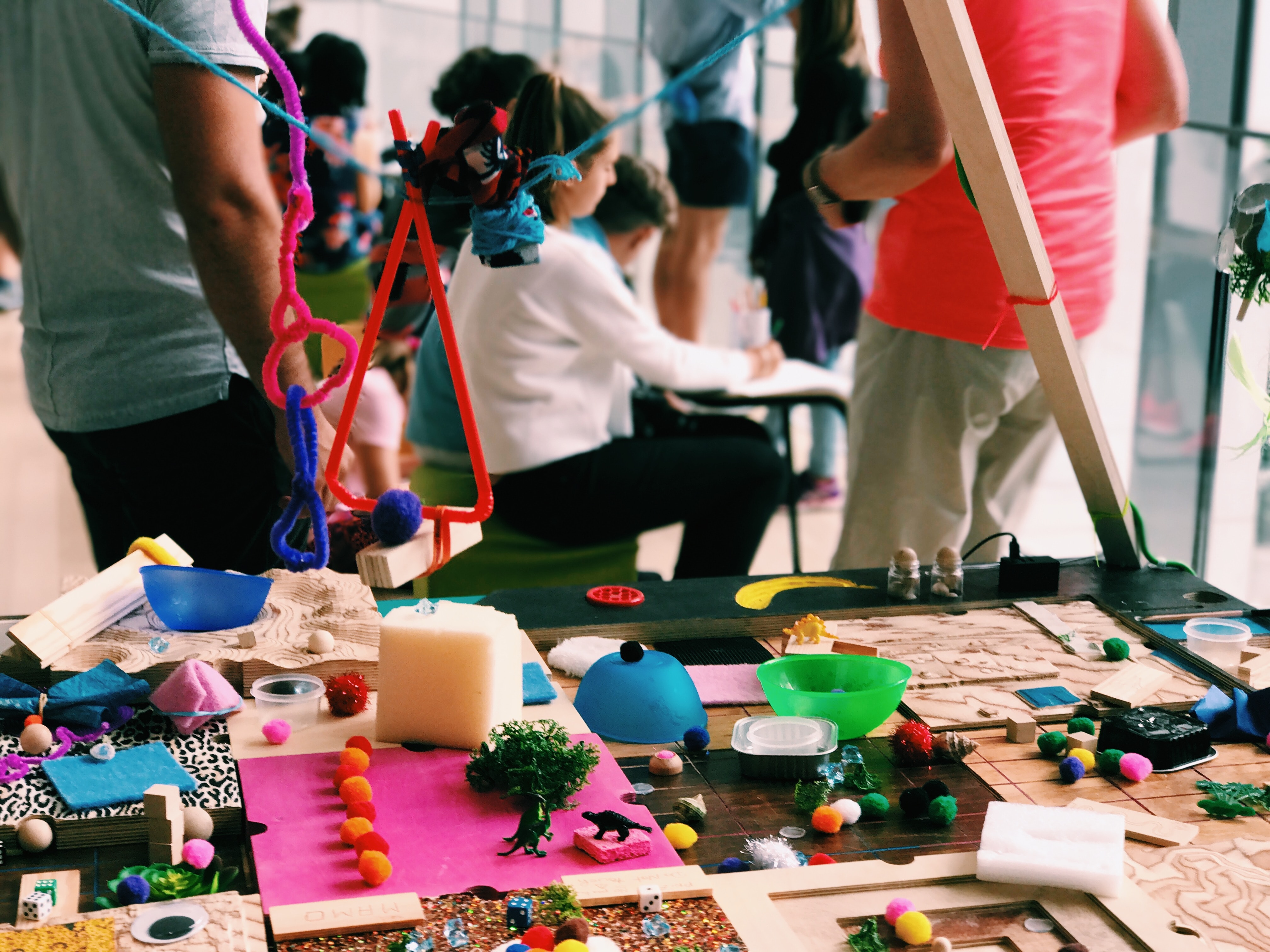
17. Toothpicks
You can put toothpicks into a colander, spice shakers, or playdough. Make a race track for toy cars or use it to paint.
18. Tools
I know they make plastic toy tools, but have you tried the real deal tools with kids? With supervision, hammers, screwdrivers, plyers, and wrenches are fun to figure out! Older children can sort screws and nails or even try building a bird house with some help.
19. Cleaning supplies
Although you may not get a clean house, cleaning supplies and young kids go great together! Get out a spray bottle of water and put a sock on their hand-voila! Your little one is ready to help!
20. YOU!
My last non-toy recommendation isn’t an item, but it is every day! Although everyday non-toys have wonderful benefits for language learning, children want to learn from you. When you model language during their play, they are working hard to form the foundation for communication.
Caregivers sometimes forget that YOU can be the most fun thing to play with in the house-and you definitely have the most language to give to your children. Play tickle monster. Play finger games like Patty Cake or Itsy Bitsy Spider. Tell stories. Spend time together at the park, zoo, or library. Involve them in the daily routine. Spend time together playing with language with your little one.
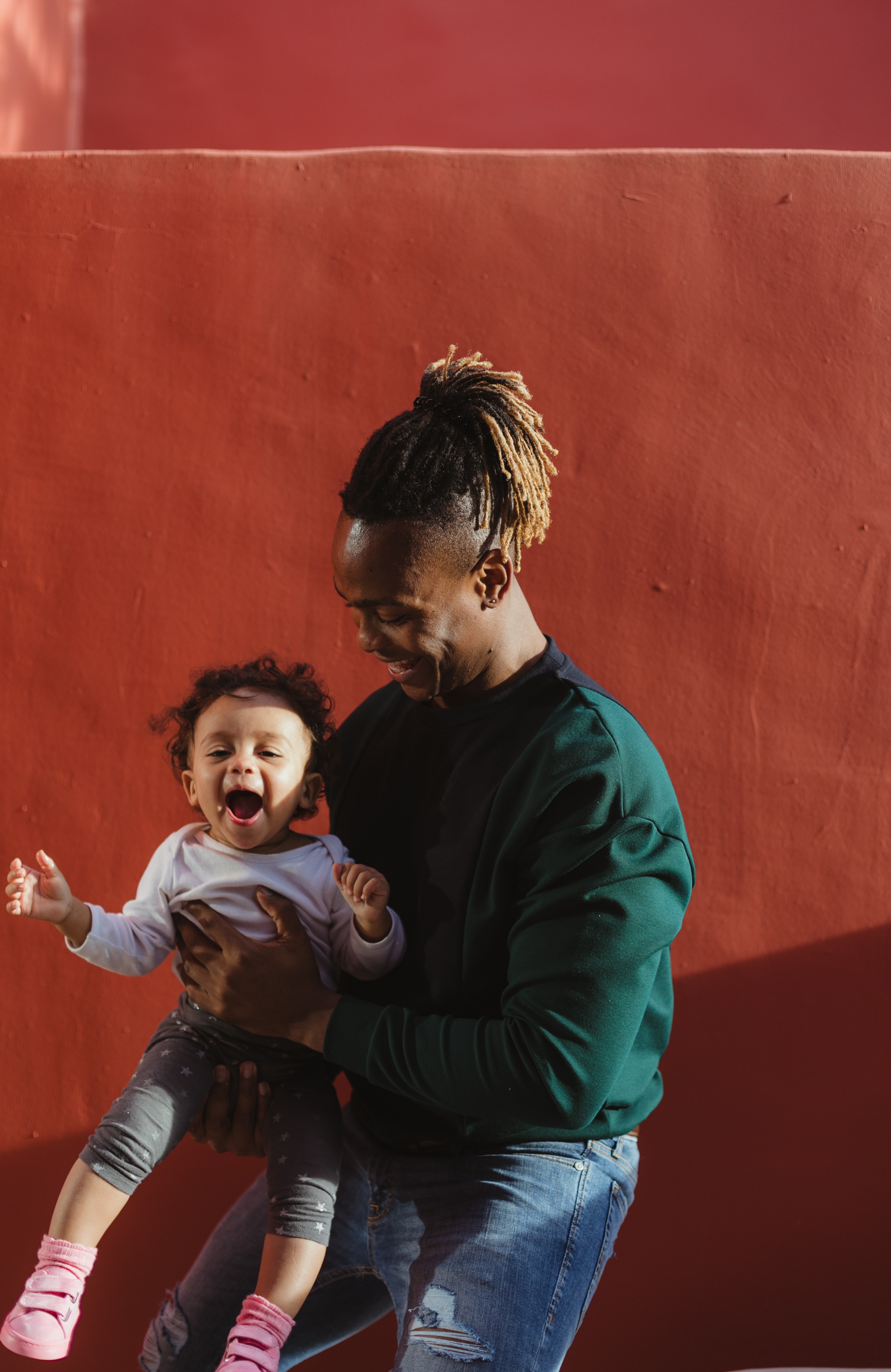

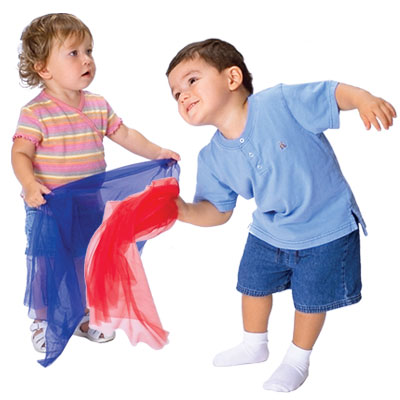
Great list! Tents from furniture and card table were favorites at our house. So many adventures were had under those sheets and blankets.
Such a simple way to build elaborate play!